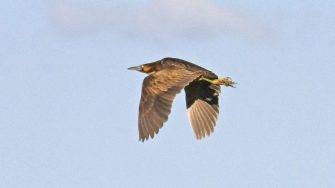
Date: Thursday, October 15, 2020
Project: Eastern Australian Waterbird Survey
Observers: Richard Kingsford UNSW, Paul Wainwright DEWHA
Pilot: James Barkell NSW National Parks & Wildlife Service DPIE
We had thought of doing Lake Cowal yesterday afternoon but I am very glad that we decided in the end to survey it today. It took us about an hour an half to do the whole survey and it would have been very tiring yesterday on the top of a big counting day. The lake was probably about three-quarters full which meant it was likely to be very shallow around its margins.
I thought we would be pretty busy but I wasn’t quite prepared for the numbers of waterbirds. I haven’t transcribed my recorder yet but I think we probably had about 50,000 waterbirds, making it again one of the more important wetlands in the Murray-Darling Basin and one of national and international importance.
Not only were there lots of waterbirds but there was a very high diversity, even including magpie geese. There were also lot of migratory shorebirds. We did two counts of the lake and then three transects down the middle of the lake to get a total estimate for the numbers of waterbirds.
We then spent some time on the ground going out to the Lake, with the Lake Cowal Foundation staff. It was great not to hear the noise of the aeroplane and enjoy the chirps of the whiskered terns, grunts of the white-faced herons and puppy barks of the pied stilts. Even though we didn’t see any of the endangered Australasian bitterns, they had been sighted there the day before by Projects Manager Mal Carnegie.
We had lunch at the visitors area of the Lake Cowal Foundation and then headed back to Sydney.
Blog by Richard Kingsford
